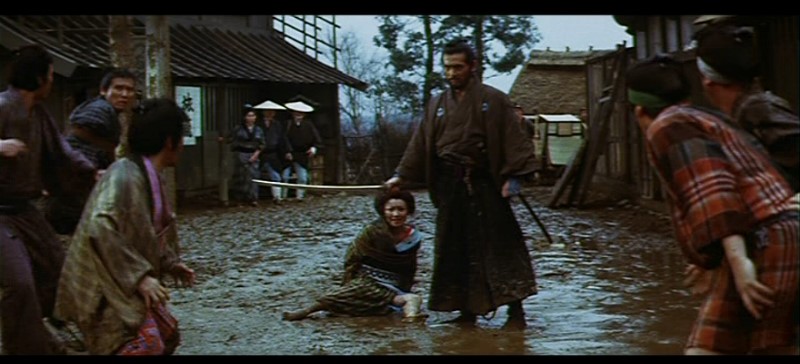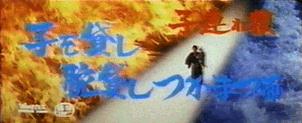
I'm a recent convert to the wonders of cult Italian cinema, the delirium of Fulci and the grandeur of Argento opened doors to the mania of Umberto Lenzi and beyond. I've always loved Spaghetti Westerns, I dug Leone before I'd ever heard of Ringo Lam believe it or not. There's something about Italian cinema at its most excessive that reminds me a lot of Hong Kong cinema. Probably the broad humour and lurches in style more than anything else. On its worst day, even the goofiest piece of shit like 'Puma Man' is a bag of fun.
Actually 'Puma Man' might be Spanish but who cares.
However, Lucio Fulci's 'New Gladiators' is not 'Puma Man'. Sure you can laugh at it and it's not very good but it rides that cinematic groove that gets people like us going, goofy plot and action along with some lurid violence and crunching action. What more could you want?
Plot wise there is not much to say. In 2072 a television station in Rome pumps out a show that styles itself on the old gladiator battles, but substituting motorcycle combat for swords and sandals. One such combatant, Drake, becomes aware of a conspiracy at the heart of the station and tries to expose it to the wider world, along the way merely trying to survive.

With a b-movie cast featuring Al Cliver and Fred Williamson, 'New Gladiators' is merely a low budget knock off of 'Rollerball' or 'Logan's Run'. What makes it tick is its mish mash of action, dreary dialogue, crap effects and insane 80s ideas of what the 21st century will resemble.
It's all so wrong, yet all so right.
Fulci dresses the sets to resemble 'Blake's Seven' with people in tinfoil suits and shoulder pads yammering on about 'laser satellites' but then takes strange diversions into gothic sets for a giallo type murder sequence and one crazy throat slashing by pendulum that seemed to walk in from another film.

He has sticks that shoot 'hate beams' that cause people to freeze and frown whilst the screen crackles with bad lightning, lasers that go 'feep-feep' and computers that take the guise of old balding men sitting in a blue room. George Lucas had nothing to worry about in 1984.
This is Fulci though, logic and cinema conventions are farted into the air for his own riff on whatever it is he's filming that week, trying to squeeze in as many of his hallmarks as possible. 'New Gladiators' manages some gore and a lot of eyes looking, then looking some more.
This is not a film to cut apart. Highlights are the climactic motorcycle contest along with the general camaraderie between the contestants. There's one guy who looks like Chuck Norris who has the funniest attempt at electrocution acting I have ever seen, along with an asian gentleman who constantly screams into the camera and pulls martial arts poses, probably in some vain home that American Ninja's producers would see his work. Sadly, Fred Williamson makes little impact in this which is crap but since he's around so much during this era I'm guessing his part had to be slimmed down due to overwork.

Technically also there's actually some incredible miniature work showing the future Rome, resembling a plush Euro disco city remix of Blade Runner, along with the propulsive score of the film itself which isn't a bad piece of Euro synth music.
Not as memorable as 'Raiders Of Atlantis' but certainly a fun romp of 80s Italian action. Also slots as average in Fulci's filmography but I'd sooner rewatch this than 'New York Ripper'.
Dig it!
MVT: Probably the production values, a pretty lousy idea is rendered into a nice slice of Euro cheese.
Make Or Break: The electrocution scene. Amazing.
Score: 6.5/10














































